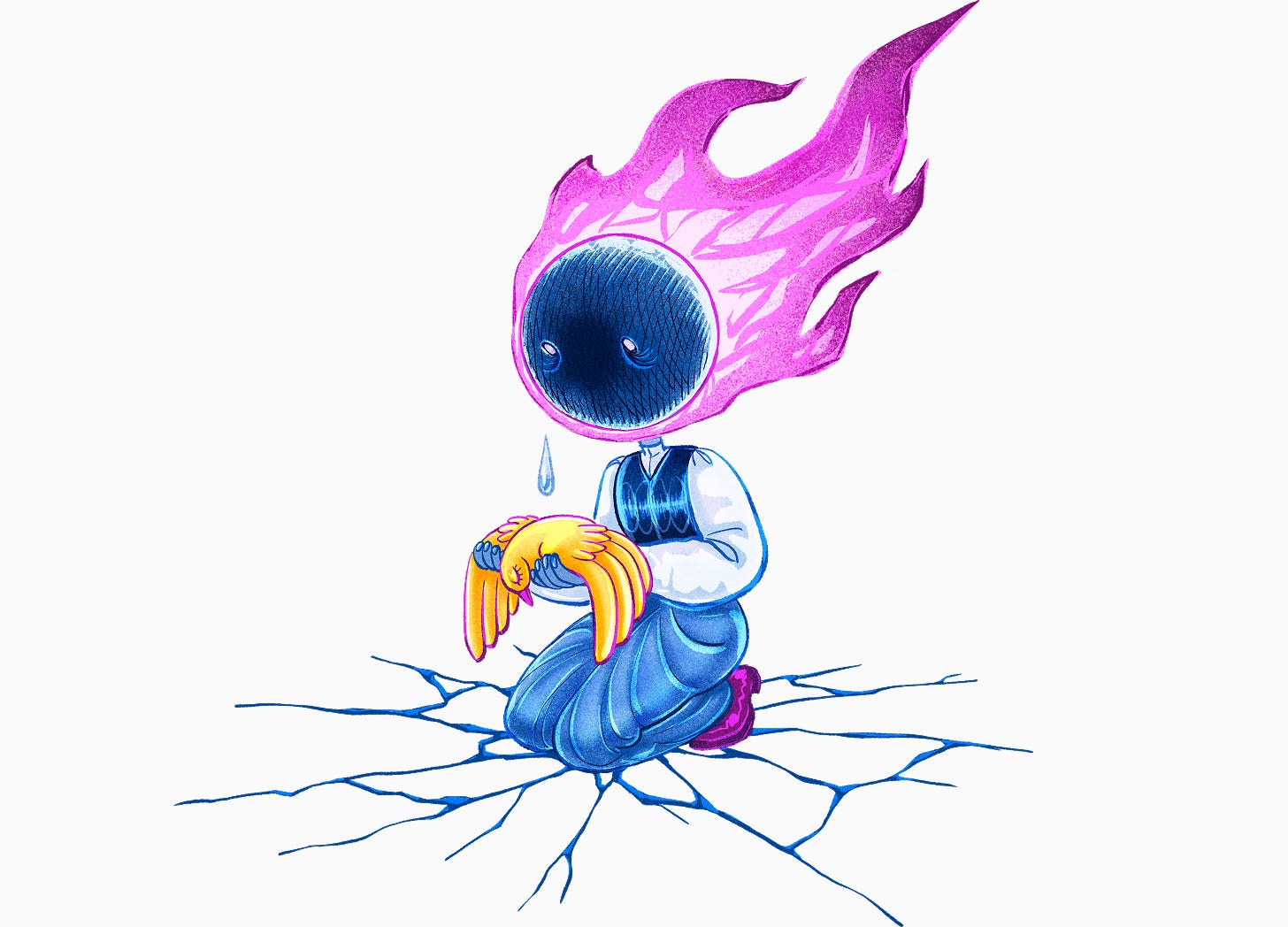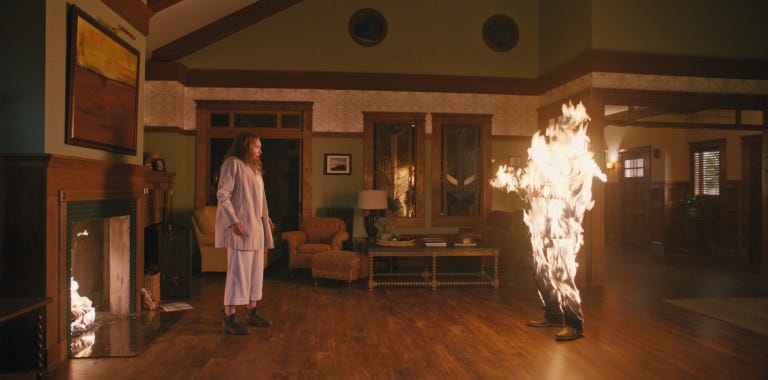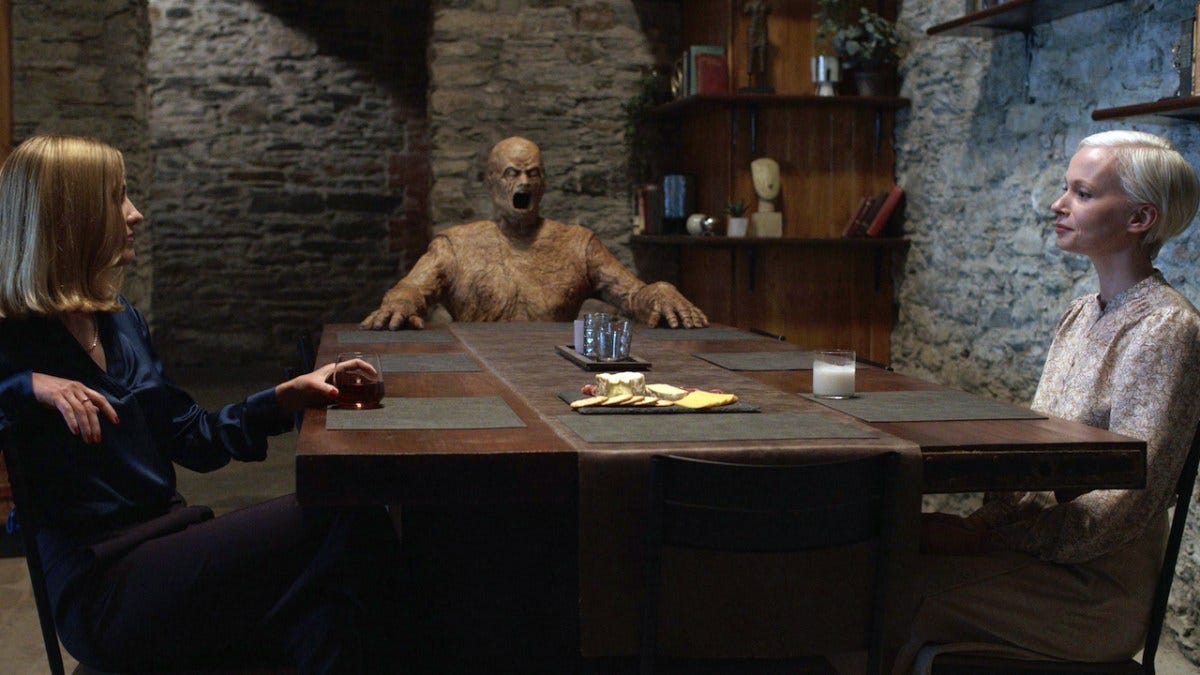For a long time, my favorite film was The Exorcist — you know, the one they had ambulances parked outside the movie theaters for because people were literally fainting due to the…well…you’ll need to watch it see what I mean.
And if you do watch it now, especially if you’re someone who’s seen lots of modern films or just been aware of the way modern culture works now — think: the zip-zap-zoom of scrolling; the click-away-dom of reels; the reduction of artistic engagement to the tap-to-like-share-save culture of sharing online — then you might be really confused as to why people were fainting.
I mean, yes, the film is scary and scary good, but it’s hardly as extreme as what we witness today in most horror films or even just film in general — the amount of violence, quick cuts, flashing lights, disorienting camera movements — they can be debilitating even if you’re just watching a comedy, let alone something purposefully gruesome.
What you might also notice is how slow The Exorcist is. Though the film only clocks in at 2 hours and 2 minutes — the tracking of the shots, the movements of the characters within the scenes, the dialogue, the music, the all-encompassing story works, metaphorically, like a very wide-lens zoomed out camera that slooooowly zooms in, and it’s so slow you don’t even notice it until you’ve basically been funneled into a closed door view with the walls caving in around you.
Which is to say, the film is experiential in the best way. And it makes you feel the horror and pain and hope of the characters not in a moralistic or even stylistic sense (like many modern films do for example by heavily using zingy narration to give you an artificial sense of attachment to the character), but rather it makes you feel what they’re feeling in a very simple way: by simply letting you live inside their story until their reality becomes yours, because, in a way, it’s always been yours.
Though I wouldn’t call The Exorcist strictly “grief horror”, I do think that it planted seeds for what this genre would later become. Today, whether you’re a connoisseur or dabbler in horror cinema, you’ll notice the sheer prevalence of capital-G Grief used as the underlying reality for the monster who is really just a metaphorical stand-in for the affects grief has on the human psyche.
Sometimes, the devil is still present in an overarching sense, like in Ari Aster’s Hereditary. Other times, there’s a human in the devil’s place — like in The Babadook, where the monster is inseparable from a mother’s unprocessed grief over her husband’s death, or in The Night House, where loss manifests as an architectural labyrinth designed to trap the living in the logic of the dead. Even something like The Haunting of Hill House (Mike Flanagan’s series rather than Shirley Jackson’s novel) hinges every ghost on a specific bereavement, folding jump scares into flashbacks of funerals, hospice rooms, and quiet rituals of remembering.
In each case, the supernatural is less about what it is and more about what it represents — the way grief remakes a home, a family, a body, until the shape of life is almost unrecognizable.
Ultimately, I think this new-not-new genre of “Grief Horror” is so popular because fear is temporary, but grief tends to lurk. We’ve always used horror to explore what we can’t explain. Ghost stories, slasher films, cosmic nightmares — they all hinge on the question What if? What if the dead returned? What if the monster found us? What if the call came from inside the house? But grief doesn’t deal in hypotheticals. It doesn’t ask What if? It asks, What now?
The horror of grief is in its permanence. In the absence it leaves behind. In the sheer inability to control what happens to us. There’s no bargaining with the inevitable, no talisman to ward it off. And yet, on screen, we watch characters move through it — not conquering grief, exactly, but surviving alongside it. The cinematic beauty comes in the contrast: crawling on bloody knees toward something that looks like joy.
And a lot of grief horror is surreal. Almost magical. It slips into dream-logic (A Ghost Story), because grief itself distorts time (The Others), bends reality (The Sixth Sense), and makes even the most ordinary moments feel uncanny (Oddity). Sure, we’re haunted by the dead, but alongside that, the greater haunting is by our own selves, the selves we’ve shed and left behind or those that have been stolen from us.
One of the best horror films I’ve seen recently is His House. Before I saw the trailer for it, I was certain I wouldn’t watch it. Frankly, I’ve been a bit exhausted by “grief horror”. Though there was a veneer of “something different before”, it gets tiresome to always have to bawl your eyes out when you’re watching a goddamn horror film for fuck’s sake. Depsite myself, then, after watching the trailer, I was pretty convinced, but it was a comment on the Youtube video that really sealed the deal. Some funny stranger had written, “finally a movie where it makes complete sense why they can’t just fckin leave the house.”
Okay, pair old tropes with new logic — that, I gotta see.
What makes His House so potent as grief horror is that the supernatural is never a clean break from reality. The scenes move in and out of hallucination with no warning, the way grief will knock you sideways in the middle of a grocery aisle. The horror is political and personal at once, yet never is it something that you feel like you’re being pandered to.
Grief can make you miserable, yes but it also has the power to conjure and transform. It can make a living hell out of an ordinary afternoon, and it can — sometimes, inexplicably — offer a strange kind of rebirth. We emerge changed, not healed, but different.
The best horror understands that survival is not just about enduring terror. It’s as much about finding the specks of joy and light and humanity and laughter in the midst of the pain of it all.
This is why Get Out was so refreshing. Like The Exorcist, this one’s also not “grief horror” in the strict sense, but it carries the same arc: terror, confrontation, and — crucially — survival that leaves you changed. Jordan Peele’s choice to end with hope instead of devastation mirrors what the best grief horror does: it doesn’t erase the trauma (because what’s done is done and can never truly be undone), but it gives you a way forward.
Grief horror works because it holds both truths at once — the permanence of loss and the possibility of joy. It reminds us that to be alive is to carry our ghosts, and that sometimes, they carry us, too.
One of my favorite James Baldwin quotes is this:
You think your pain and your heartbreak are unprecedented in the history of the world, but then you read.
Just as going through the process of grief helps us transcend our pain, and also, hopefully, allows us to see ourselves as more than the sum of our parts, more than just who we are within our own contexts, and as part of the larger context of life itself, the universe, god, existence, and beyond…so art — any form or genre — ought to help us transcend the medium of its making and even the message it might wish for us to feel. In that transcendence is the experience of natural emotion and joy, no matter if you’re watching grief horror or slapstick comedy (highly recommend Charlie Chaplin’s The Great Dictator by the way).
Culturally, we’ve somewhat drifted from this. There’s a great compulsion today to package and broadcast our grief as content, to turn loss into a currency of engagement. We’ve built platforms that reward the quick hit of outrage or division over the slow often invisible work of empathy, kindness, and grace.
Grief horror, at its best, is a counterweight. It refuses to be bite-sized. It forces you into the room and shuts the door, makes you stay there until you can see that the ghost in the corner isn’t just yours — it’s everyone’s. And in that slow, suffocating, strangely luminous space, the divisions fade. You’re left with the same truth Baldwin was pointing to: that to grieve is to be human, and to be human is to stitch together moments of light, even and perhaps especially in the dark.











Yes, grief is its own species of horror, a parallel but not sibling horror to slashers and monsters and such. Most horror is about the very near future, what’s just beyond the door, what’s at the bottom of the stairs, just around the corner. Grief ls rooted in time in the other direction. Grief can be horror because it’s rooted in time we can’t touch anymore, can’t stop anymore. We can only change our relationship with it, bond differently with its cause from here in the present. This is why grief feels so heavy. We’re always weak against it until we can let it go. While grief is often an explanation today, an excuse for guns and blades, for helplessness against adamant harm, it’s not like a hostile weapon. A weapon is a prop. Grief is a vine wrapping the internals of a story. Our story. One gun can be replaced by another but every grief is personal to its story. A gun can be returned to its shelf but grief can’t lose its oppression until we change its story in the present moment. Show grief without violence and you can see its roots. Show grief in violence and you only see its flowers.
one of my favorite recent posts of yours, really intriguing analysis and great examples to get me to remember how the mentioned films made me feel afterwards.